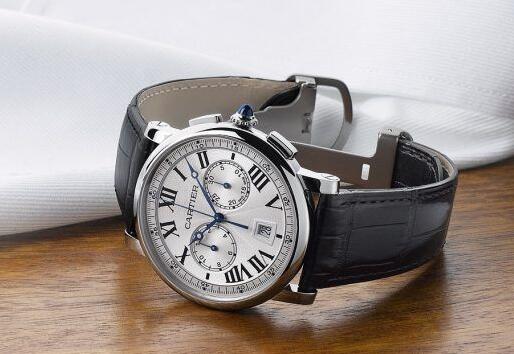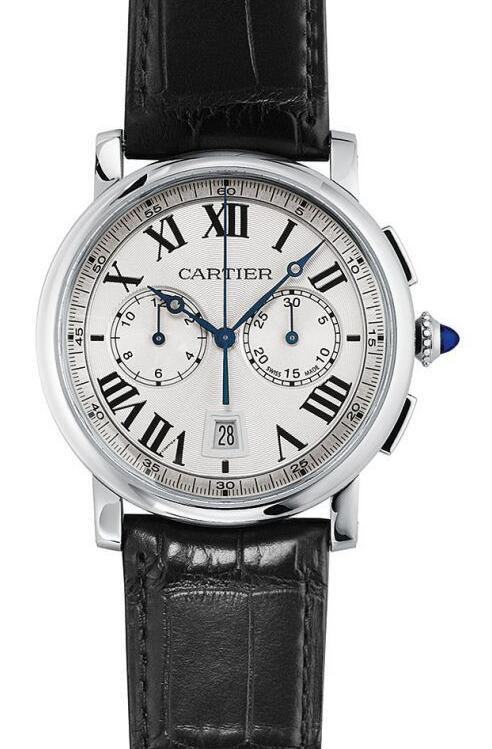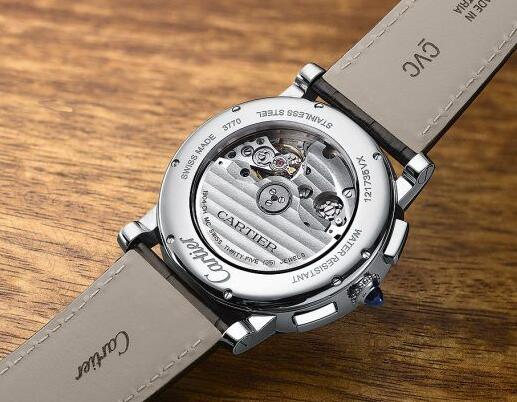Originally created to give collectors a chance to own vintage-looking Cartier watches, the timepieces in Collection Privée Cartier Paris have become highly sought after in their own right.
The Fine Watchmaking Collection, Cartier’s current high-end watch line, is a stunning series comprising complicated watches, which showcase the maison’s high-tech horology. The collection is made in Cartier’s own 30,000 square meter manufacture in La Chaud-de-Fonds and represents the very best that the brand has to offer today.
Collection Privée Cartier Paris (CPCP), on the other hand, was much more a celebration of what the maison had achieved in design through the 20th century. The collection, which ran from 1998 to 2008, was based on the legendary case designs that the brand is so famous for. It fulfilled a desire on the part of collectors for vintage-looking best-quality fake Cartier watches online, with historic details and a movement belonging to the finest Swiss watchmaking tradition.
All movements within the CPCP series were from brands like Piaget, Jaeger-LeCoultre, Gérald Genta, Techniques Horlogères Appliquées (THA) and Frédéric Piguet, and hand-assembled and inspected by a master watchmaker. high-performance copy Cartier took these high-grade movements and added its own finishing, such as the traditional Côtes de Genève motif and the interlaced Cartier double “C”. Many watches in the CPCP series had a display caseback to show the decoration of the movement, which became one of the signature elements of the CPCP collection.
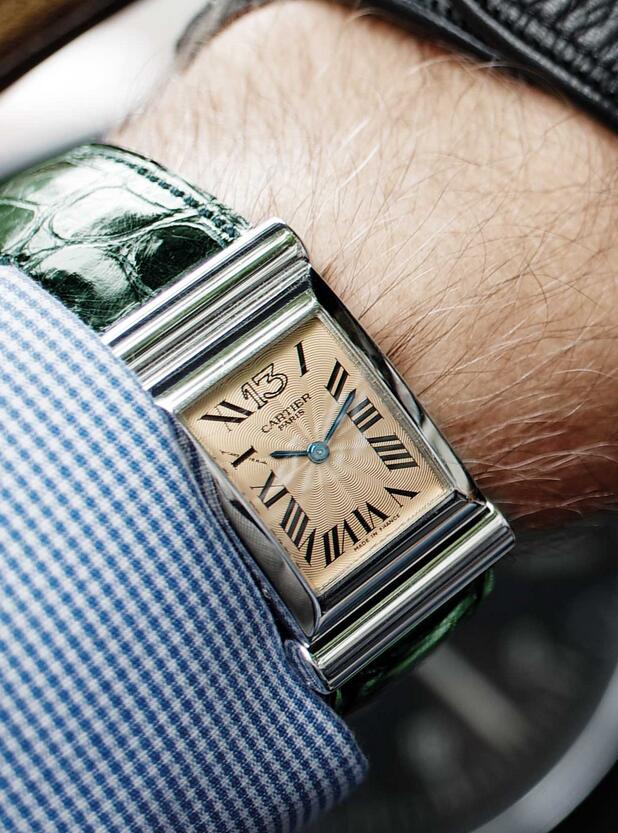
Many of Cartier’s early 20th-century watches had the word “PARIS” inscribed underneath the brand name, which gave the dial something extra that became much-sought after by collectors. In response, Cartier added the same word to almost all CPCP watches. Just one model had a dial without “PARIS” on it – the Tank Cintrée with Arabic numerals produced in both yellow gold and platinum. (The same version with Roman numerals came with the familiar inscription.)
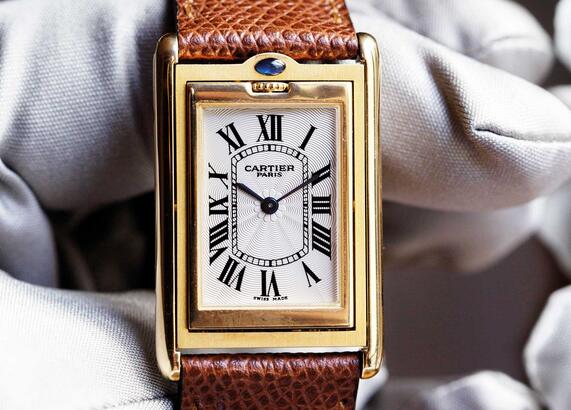
Coming Up Roses
Another typical CPCP design feature that characterised the collection was the central rose motif. Just a few of the watches from the first CPCP launch in 1998, like the Santos Dumont, Tank Américaine, Tonneau and Tank Obus were delivered without the rose, but those models, relaunched in the following years, were redesigned to include the flower.
The rose motif and the “PARIS” engraving were important features that helped to push the series to another level; collectors always mention these details when CPCP is discussed. The same thing happened with the numbering on the back. During the first year, some models were delivered with standard numbering, while from the second year onwards, all models had an individual numbering and an indication of the number produced – of particular interest when the watch is a limited edition.
One of the stand-out models in the CPCP collection is, without a doubt, the Tank Louis Cartier, produced in its historic dimensions of 33.5mm by 25.5mm in yellow gold and in platinum. The watch has baton-style hands and is powered with the ultra-slim Cal. 021MC manual-winding movement by Piaget; the crown is set with an impressive sapphire. In 2006, that same watch was released as the Louis Cartier XL, powered by Piaget’s hand-wound 9701MC movement, visible through the display caseback of the 30mm by 39mm, rectangular rose-gold or platinum case. It was said that the total number of watches produced in pink gold remained below 300 pieces, while no more than 50 pieces were made in platinum. Unfortunately, this model was not a numbered limited edition.
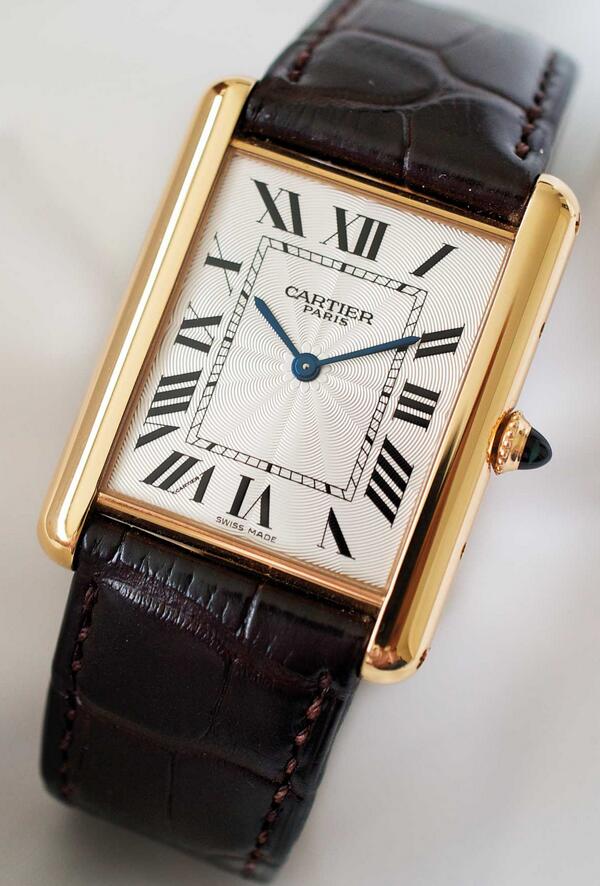
Dating back to 1928, the monopoussoir complication was one of the first complications Cartier developed. The highly sought-after Tortue MP was the first model to incorporate this complication, and Cartier did a really good re-issue in yellow gold for the first CPCP release – almost like the original model, but with a slightly larger and more contemporary case. The comeback of the Tank Mono Poussoir was even more spectacular – a stunning but once-completely-unknown Tank dating back to 1935 that now became available in a limited edition of 100 pieces each in pink and white gold. The Tortue MP and the Tank MP shared the same 045MC movement, specially developed by François-Paul Journe, Denis Flageollet and Vianney Halter for these top copy Cartier models – and also used in the De Bethune DB1 monopusher chronograph.
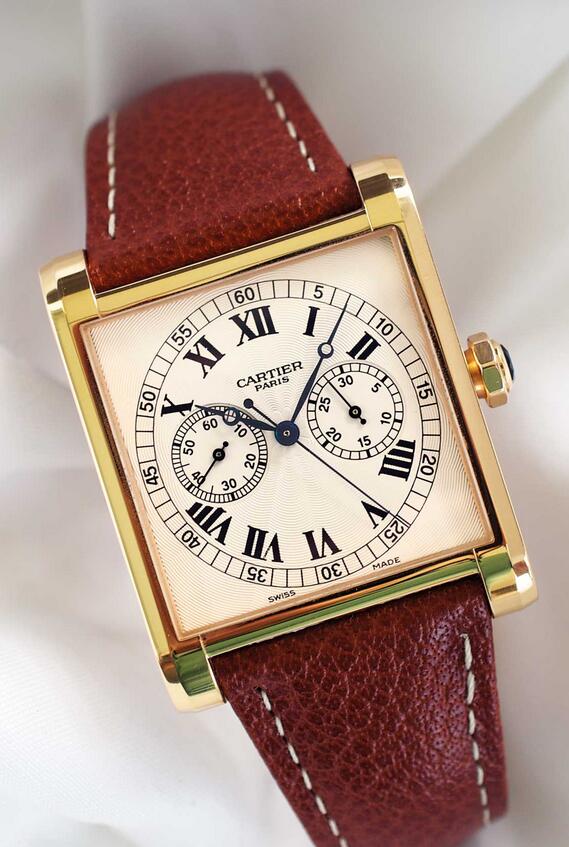
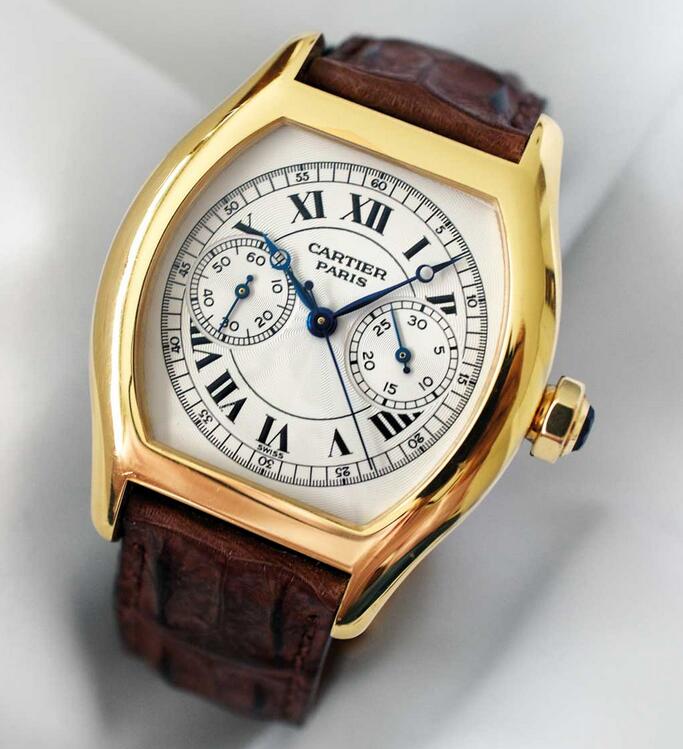
Tales Of The Unexpected
Cartier did not do much to publicise the Collection Privée and we can only guess at the reason. But it looks like the low-production series sold out very quickly. The limited editions were usually produced in less than 100 pieces and the non-limited editions often did not number more than 250 to 300 pieces. At the time the internet was not the fount of all watch knowledge that it is today and there were certainly no watch blogs, so it was not as easy for collectors to find out what new models had been launched. The boutiques were supplied with a little brochure, but it was not updated on an annual basis as most contemporary catalogues are.
To make it even more confusing, some CPCP models were launched only in a certain territory or for a special occasion – for instance, the Tank Chinoise Double Fuseau that was made for China had all the typical CPCP details like the rose and “PARIS” on the dial, and was produced in 100 pieces each, in pink and white gold. But outside of Asia, no one was aware of its existence. It was a remarkable travel watch, specifically created to celebrate the relations between France and China.
Other amazing examples were the few pieces that were exclusively sold by the Cartier flagship store at 13 Rue de la Paix. The Paris boutique had long been closed for renovations, and when it reopened in 1999, with huge parties to celebrate its 100th anniversary, there were a few very special watches made to commemorate the occasion. One of the most well-known and important pieces was the Tortue Mono Poussoir in white gold, with a salmon-coloured dial and a big Arabic numeral “13” – instead of a Roman numeral XII – and produced in an edition of just 13 pieces.
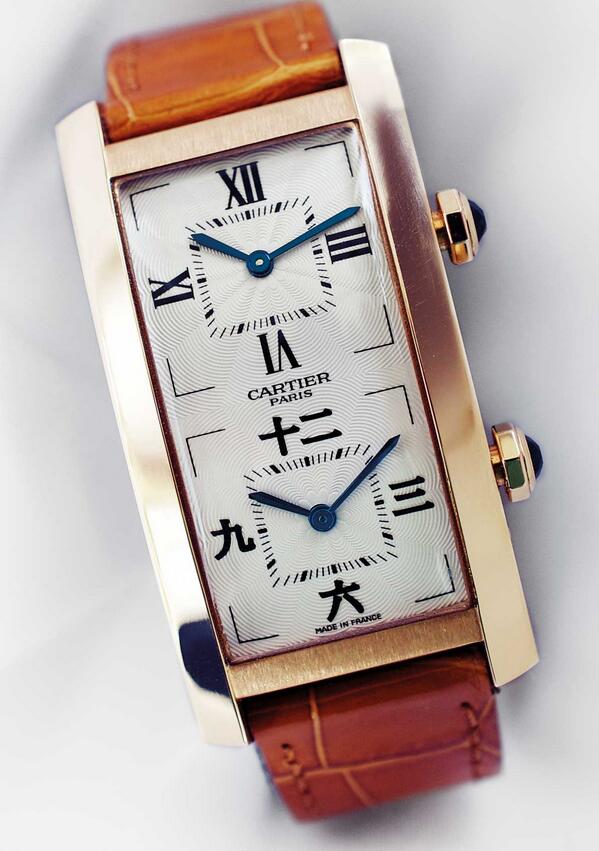
An interesting addition to the Collection Privée came with the release of the Tank à Vis, which was presented as a new model with a whole new name. In fact, the Tank à Vis – launched as a series of four different models – was a modern interpretation of the Tank Étanche, with a similar case design. This new model is the only Tank in the collection that has a bezel, but the Cartier designers created a small difference between the vintage and the new model, and gave the Tank à Vis four screws on the lunette.
Cartier did a really nice job with the relaunch of the Tank Asymétrique and the Tonneau. The Tank Asymétrique – or Parallélogramme, as it was called in the 1930s – was a driver’s watch that was known for its various models with different lug constructions. The bridge constructions that Cartier chose for the Collection Privée were by far the most gorgeous of the Asymétrique collection. With its Breguet-styled hands and larger case in yellow gold, the limited-edition series – a mere 150 pieces – was sold out in a very short time.
In its early years, the Tonneau was a very popular and dandy model, but fell out of favour in the 1980s, mainly because the case and very narrow strap were just too damn elegant. For the CPCP series, elegant fake Cartier enlarged the case of the Tonneau, gave it all the historical details – like the rose and Breguet-styled hands – and came up with a very smart construction to make the strap wider. Instead of keeping the leather strap at the same width throughout, it became 1mm wider beyond the lugs. It gave the strap a much wider appearance, and the watch became a cool man’s timepiece that met the demand for larger and more masculine models.
CPCP was cheap copy Cartier’s first serious attempt to reach the male watch consumer/collector, and it was the foundation of haute horlogerie on a larger scale; but it also became the start of something else – a new extraordinary way of packaging watches that was soon followed by the entire industry. While men’s watches were usually sold in small and often square boxes at the beginning of the 1980s, the watches in the CPCP series came in rich red boxes that were three times as large, with room for cufflinks and rings. The inside was lined with black velvet; champagne-coloured if the watch was bought from the 13 Rue de la Paix store. Together with this large box, the new owner also received a smaller, polished hardwood presentation box, and a suede travel pouch with cloth and loupe. It is a handsome kit that one almost never receives when a CPCP watch is found at an auction or dealer. These wooden boxes are real collector’s items.
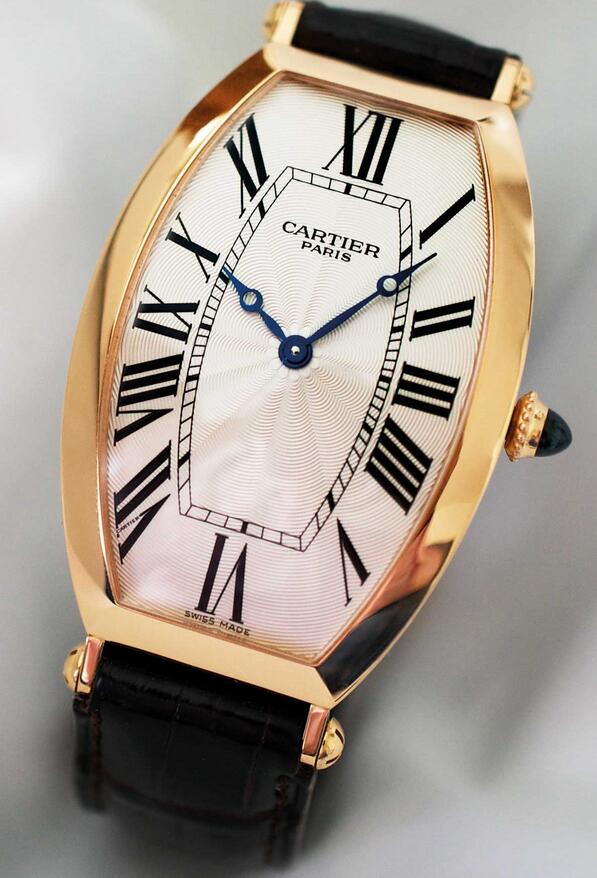
A huge amount of love was put into the watches, with a perfect eye making sure that the details were as close to those of the original historic pieces as possible without compromising collectors’ preferences for slightly larger and more wearable cases. When we consider that there are now over 300 Cartier mono-brand boutiques worldwide, plus all the concessions, the numbers produced in the past were really seriously limited. Collection Privée Cartier Paris replica watch with Swiss movements sales may be history now, but it has, without doubt, become the next best thing to collect when it comes to vintage Cartier timepieces.
When it comes to obtaining a pre-owned Collection Privée Cartier Paris watch, or perhaps a vintage watch from the 1930s, it is good to know that the new Manufacture Cartier is always able to restore the watch to its original beauty. From glass to crown, and from hairspring to balance wheel, knowing that the manufacture has this technological finesse makes the decision to buy a vintage watch less difficult.
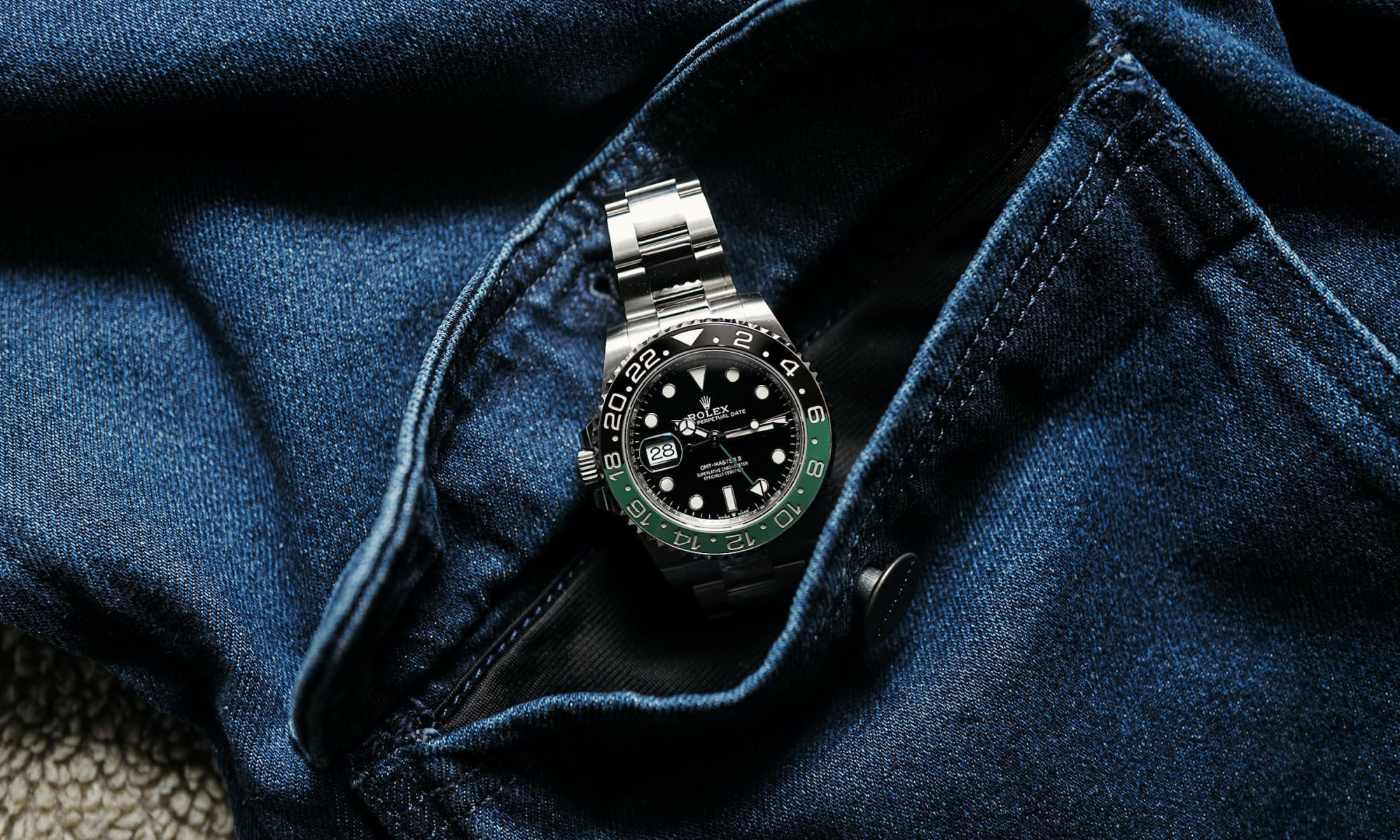

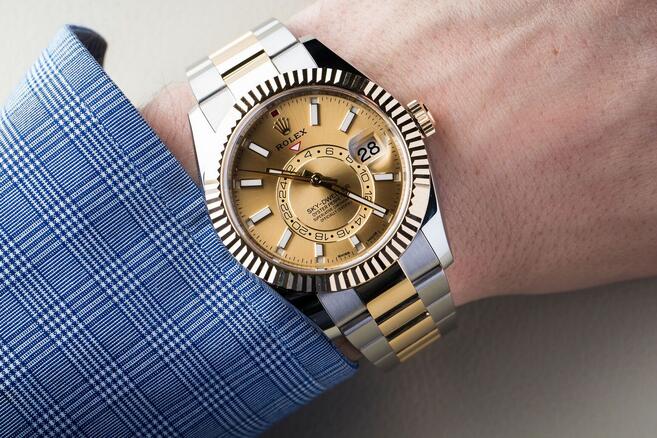
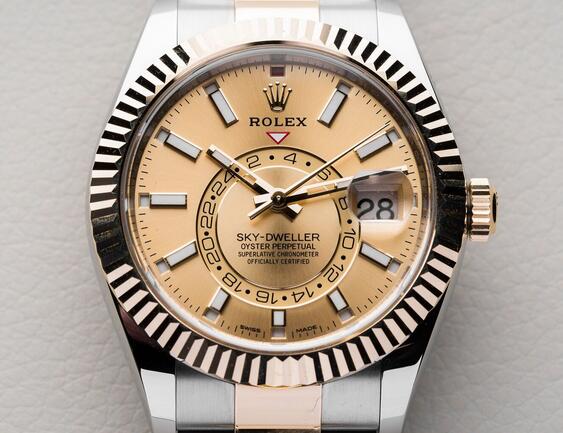
 Two-Tone is also a bridge between the steel and full-gold models. They offer a more luxurious look over steel, yet with a far more friendlier price tag than the all gold model. It is a watch for people who want the best of both worlds, as well as a look that has become almost synonymous with Rolex.
Two-Tone is also a bridge between the steel and full-gold models. They offer a more luxurious look over steel, yet with a far more friendlier price tag than the all gold model. It is a watch for people who want the best of both worlds, as well as a look that has become almost synonymous with Rolex.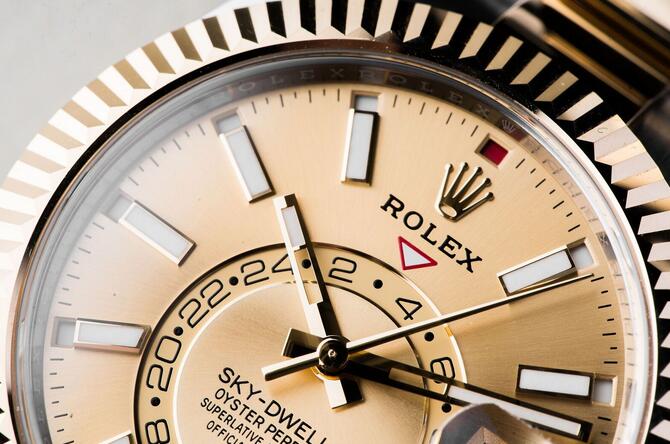 The
The 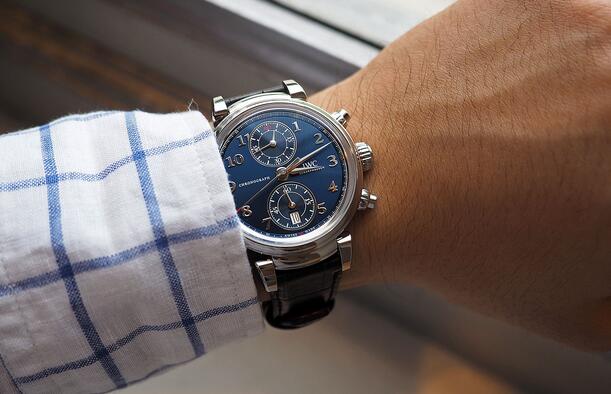
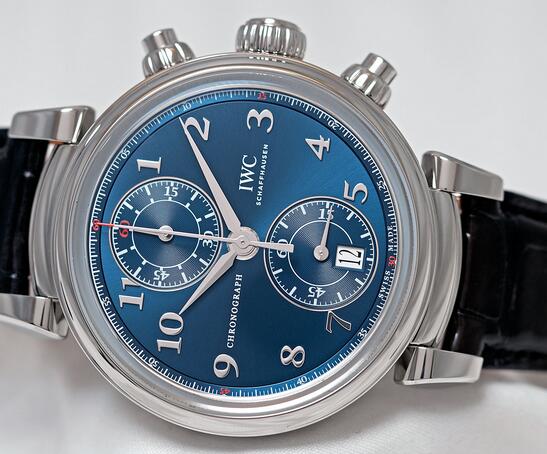
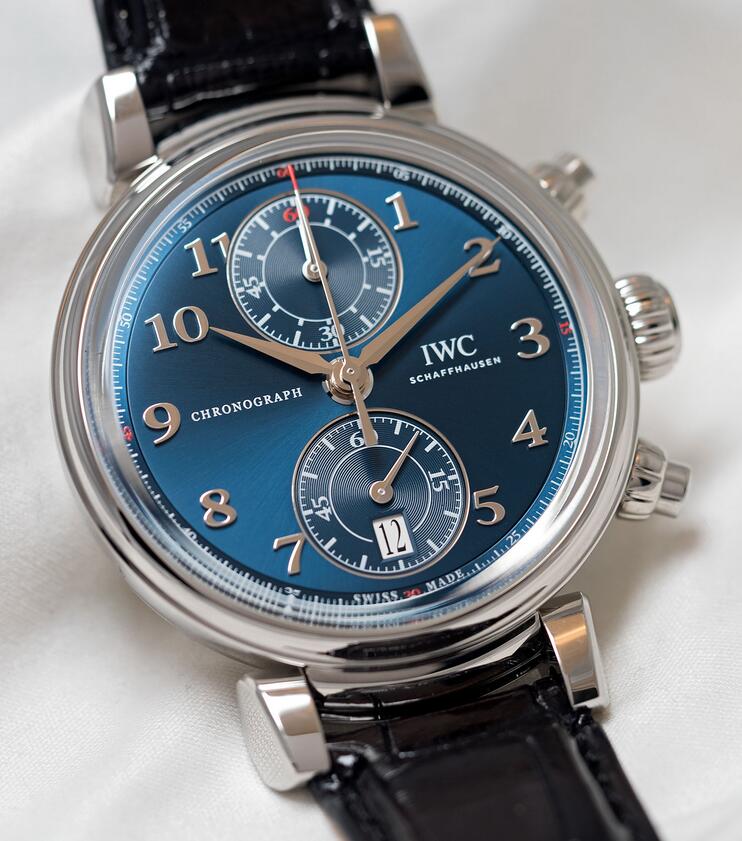 The case is entirely polished, front, back and even the lugs, which is less interesting than having alternating brushed and mirror finished surfaces. The rationale for this finish is likely the design inspiration for today’s Da Vinci: its namesake of 1985 that was similarly shaped and also entirely polished (save for uncommon examples in steel that were entirely brushed).
The case is entirely polished, front, back and even the lugs, which is less interesting than having alternating brushed and mirror finished surfaces. The rationale for this finish is likely the design inspiration for today’s Da Vinci: its namesake of 1985 that was similarly shaped and also entirely polished (save for uncommon examples in steel that were entirely brushed).
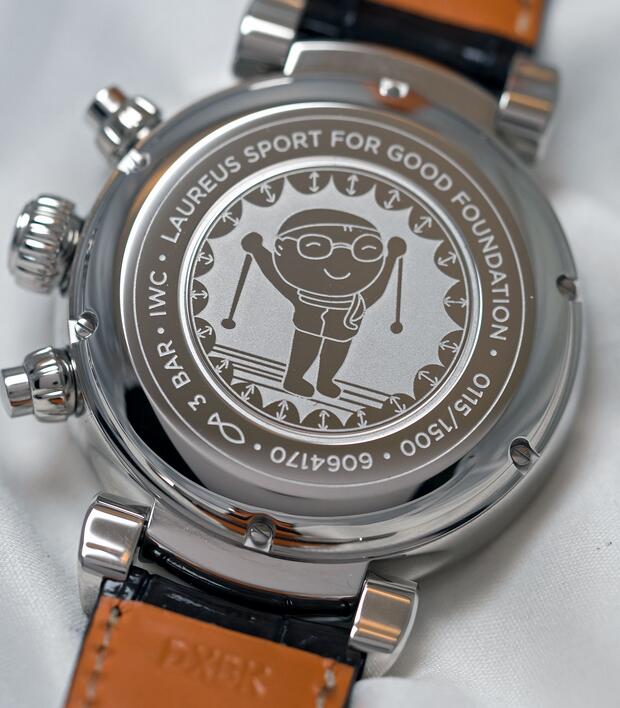 Underneath the back is the calibre 89361, part of the 89000-calibre family of movements. Positioned as IWC’s upper-end chronograph movement, the calibre 89361 has a solid list of features.
Underneath the back is the calibre 89361, part of the 89000-calibre family of movements. Positioned as IWC’s upper-end chronograph movement, the calibre 89361 has a solid list of features.